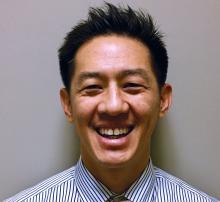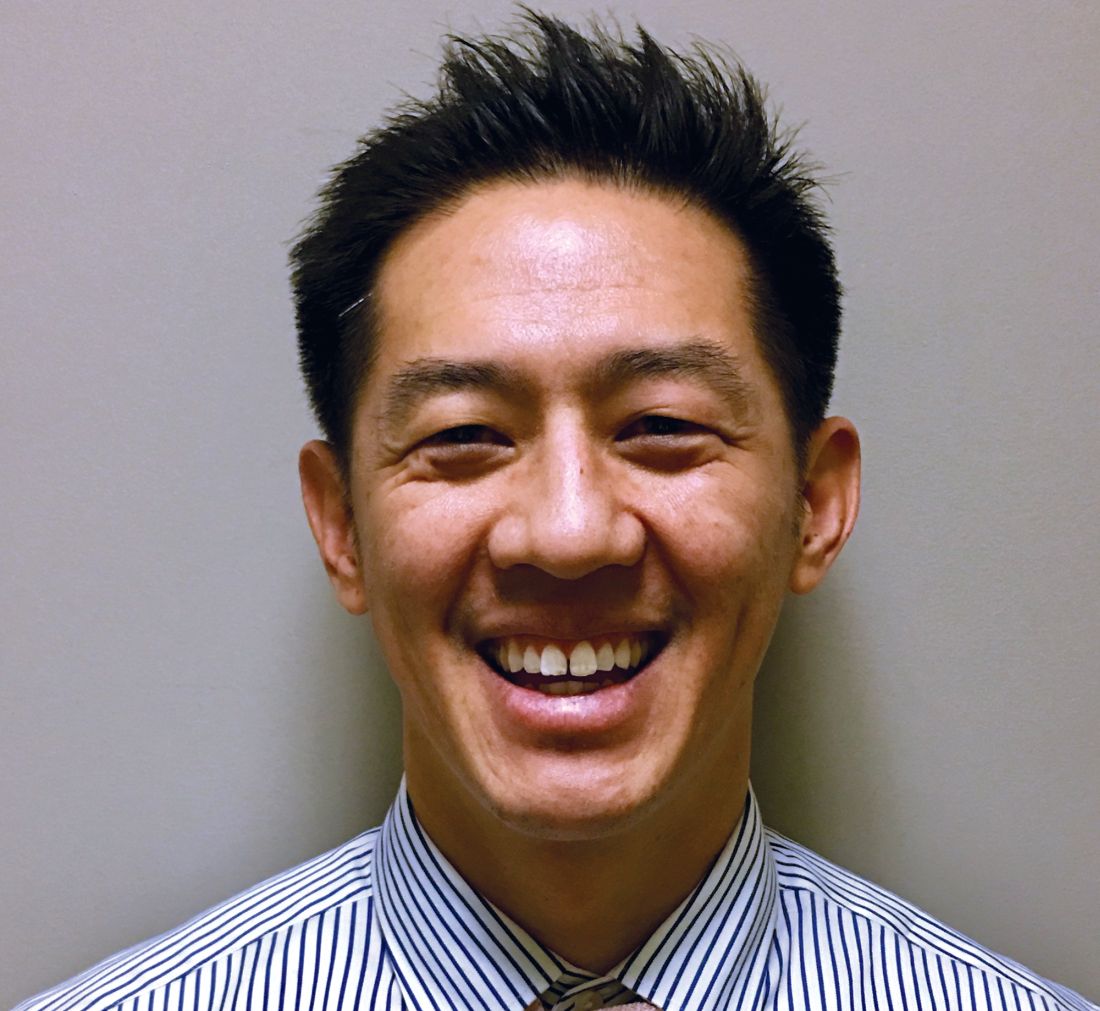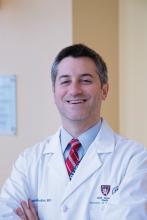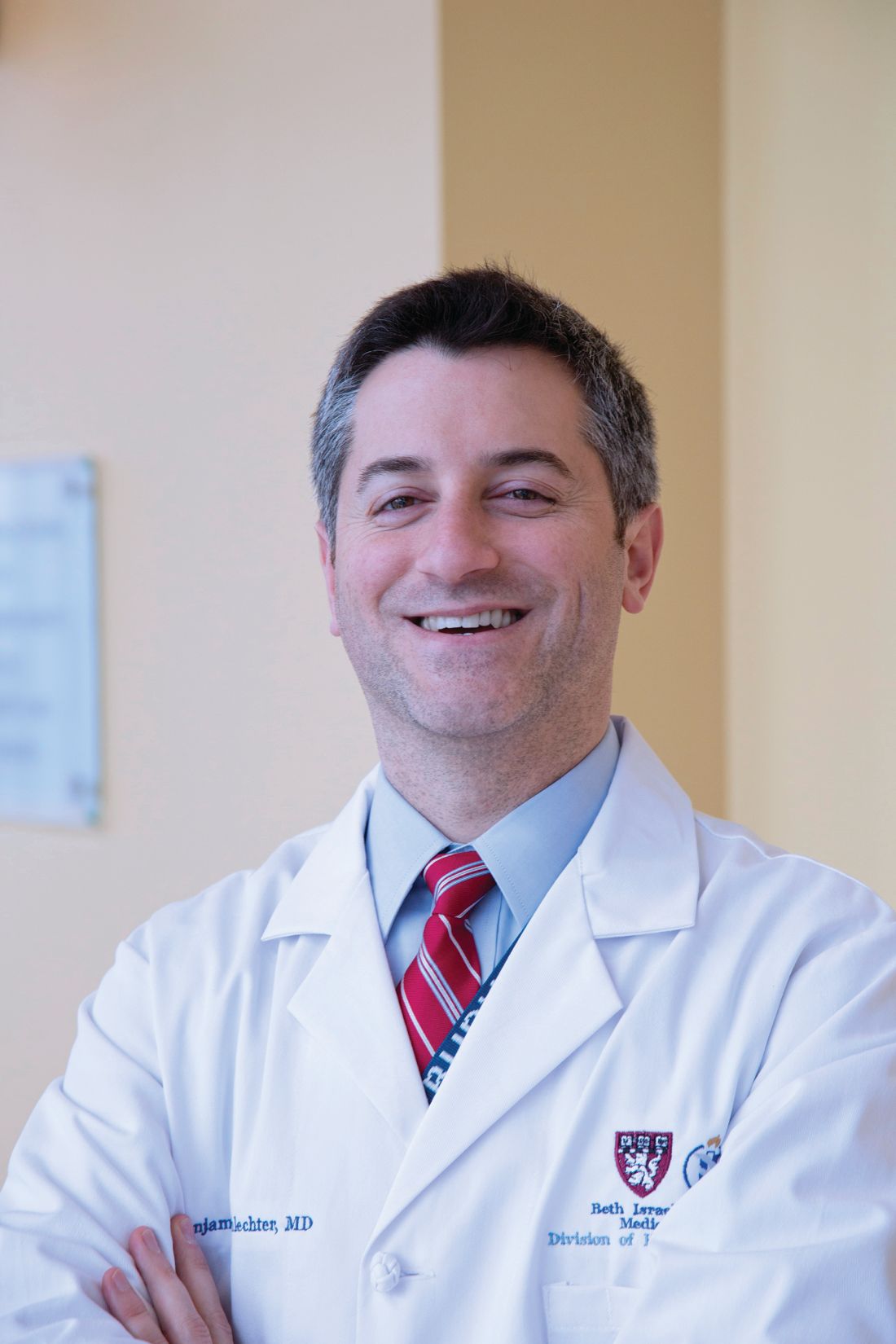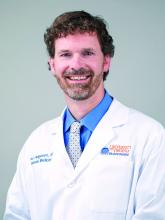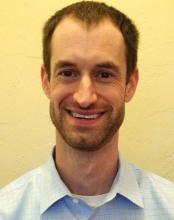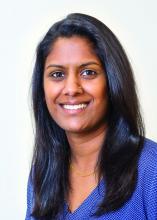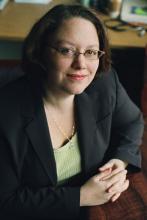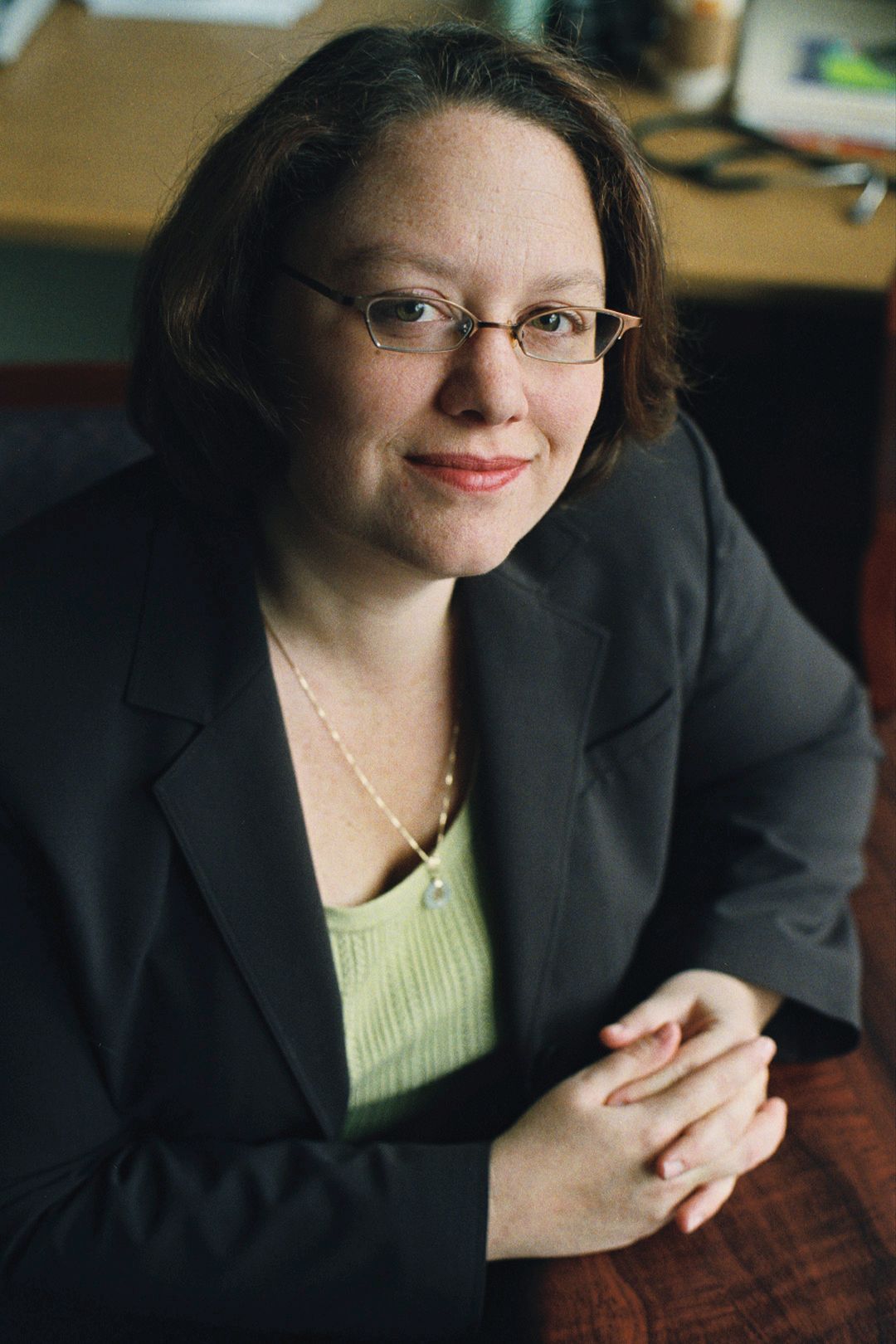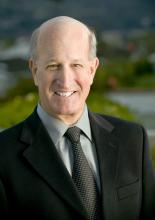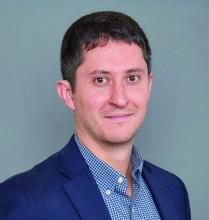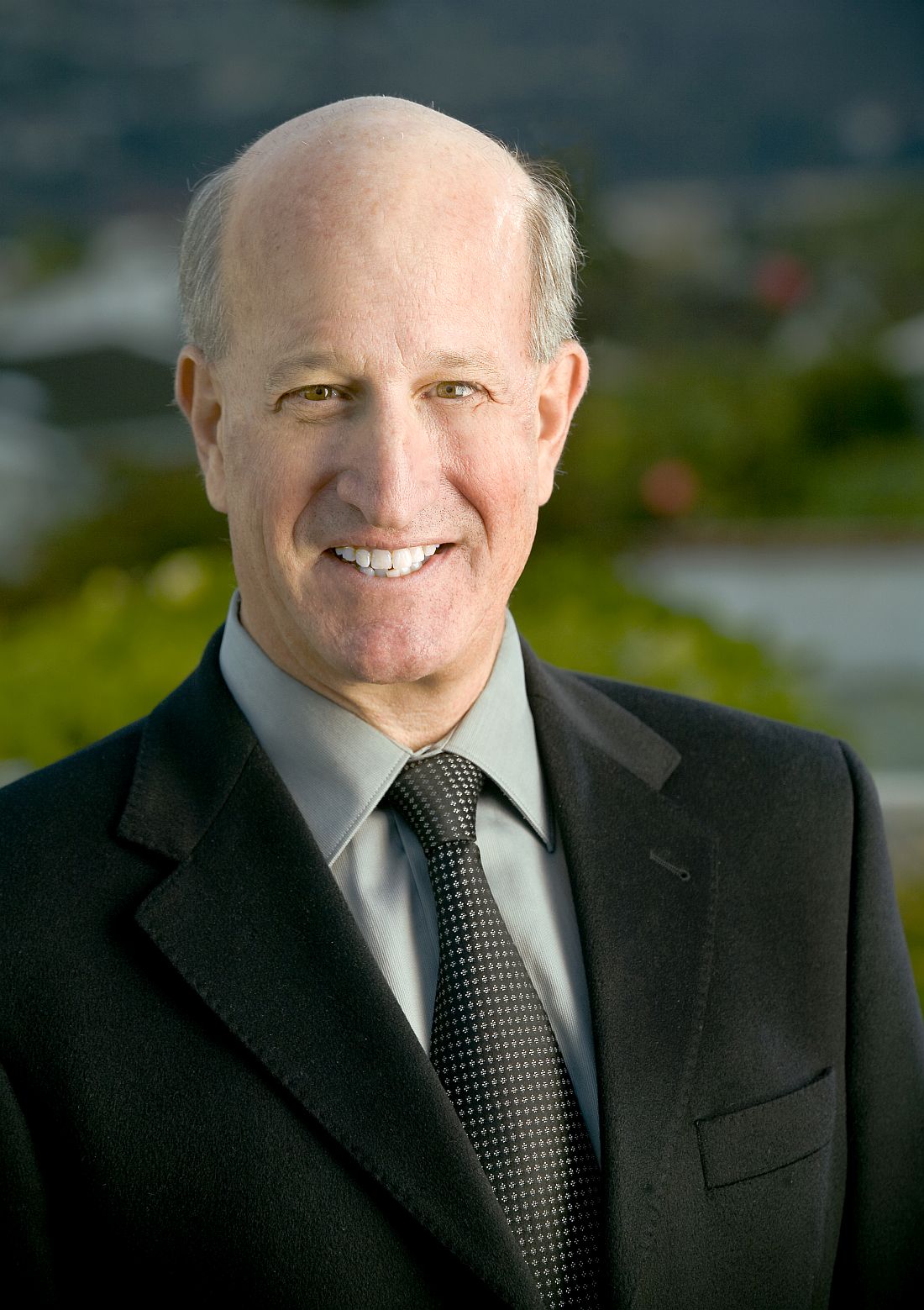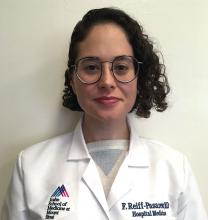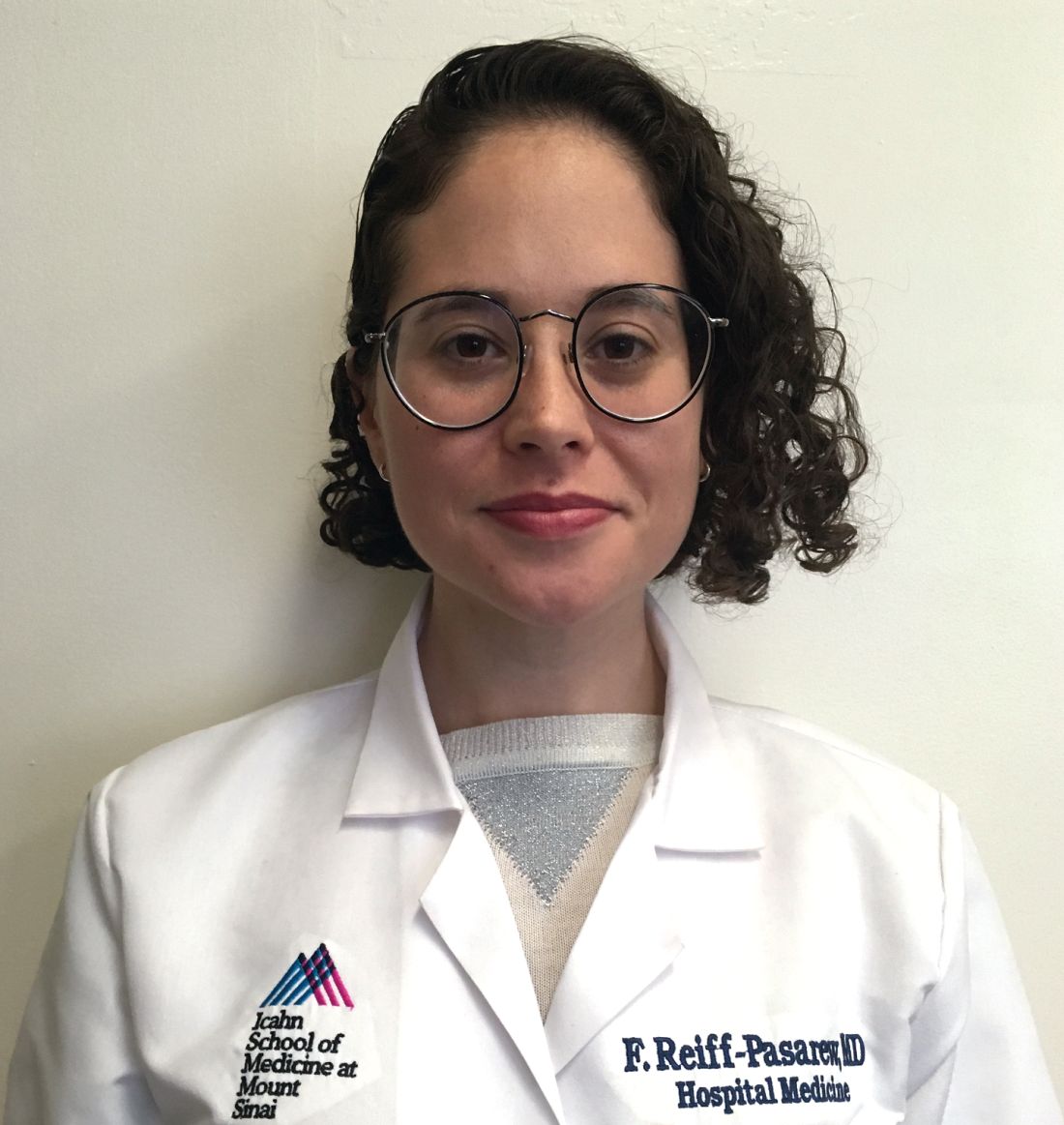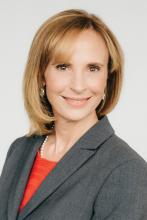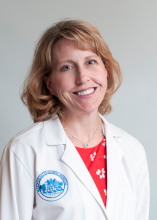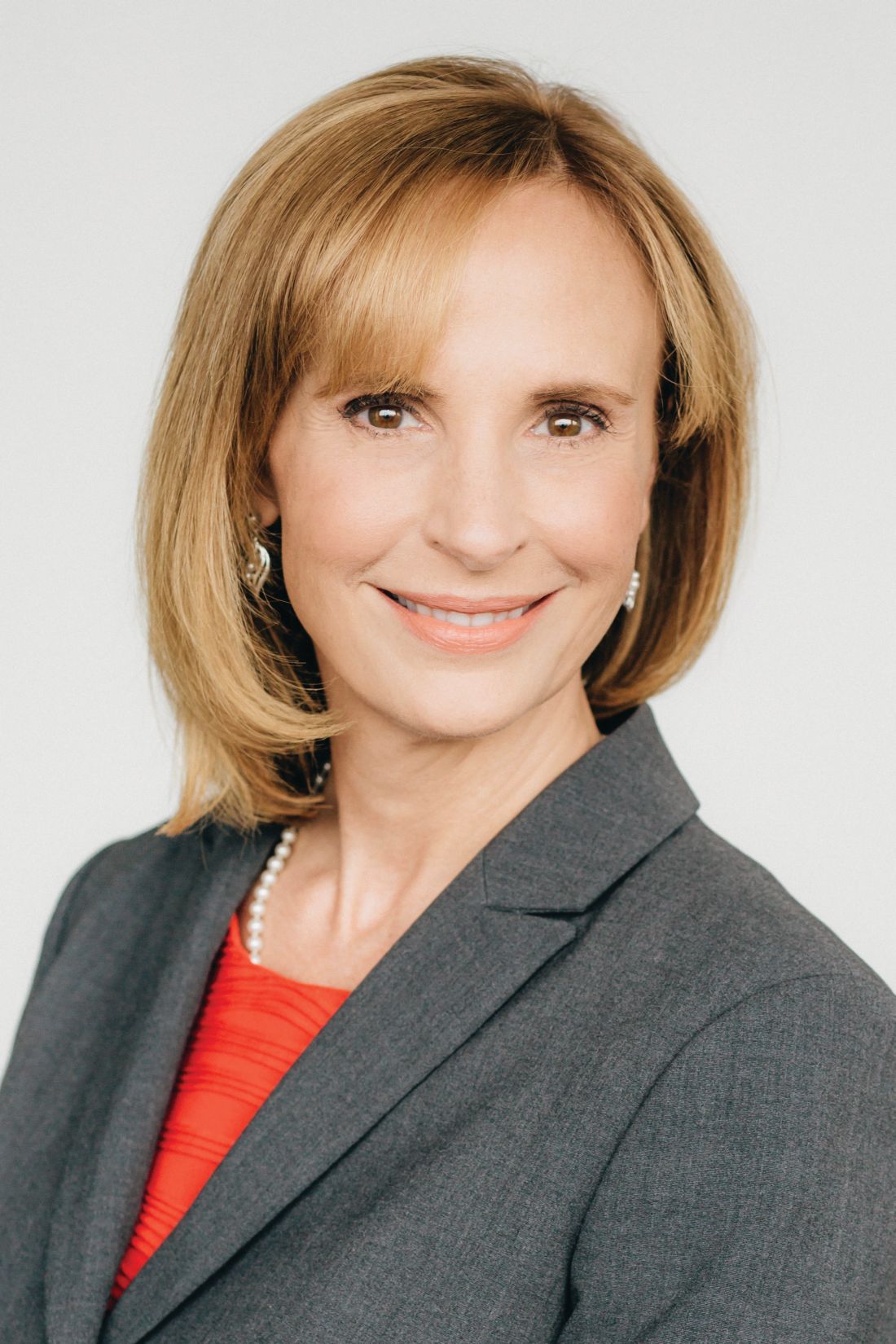User login
Myriad career options for hospitalists
The “Hospitalist Career Options” education session provided future and early-career hospitalists with information about the diversity of potential career tracks within hospital medicine.
“There are so many different things that people do and that’s what so amazing about hospital medicine,” said Dennis Chang, MD, FHM, associate professor in Mount Sinai Hospital’s division of hospital medicine, New York, in his talk on Monday. “You never really know where its going to go, and it’s really a matter of keeping your eye out for opportunities.”
Hospital medicine offers a diverse and interesting career that presents a variety of professional opportunities to those who practice it, Dr. Chang said. He noted that many hospitalists are gravitating toward careers in improving patient safety and quality improvement.
“They are working on the systems that are in the hospital and trying to make them more efficient and safer for patients,” he said.
Keeping with the theme of the talk, Dr. Chang pointed out that there a number of other specialty areas that hospitalists can explore.
“A lot of hospitalists also get into education, educating students and residents,” he said. If teaching is not your desired area of practice, you can also try your hand at “becoming CMO [chief medical officer] of a hospital” or other areas of administrative leadership or “informatics and electronic health records.” Most importantly, there are a variety of professional avenues available within hospital medicine, he added.
Dr. Chang said that the design of the session was intended to help early-career hospitalists navigate their professional path and indicated that it definitely would have provided him with some guidance. “When I was a resident thinking about what I wanted to do after residency, I didn’t necessarily know what hospital medicine was,” he said. “I think I thought it was a cool clinical job, but I didn’t understand that there were so many other things that you could do with it that are not clinical, but still really interesting.”
Dr. Chang emphasized that early-career hospitalists do not need to have a fully formed idea of the professional track they wish to pursue.
“It’s okay if you don’t know what you want to do, just do what you think is interesting and it’s amazing the things you can end up doing,” he said, noting that the best thing for residents and early-career hospitalists is “to get experience and training.”
At the end of the talk, Dr. Chang and his copresenter Daniel Ricotta, MD, offered attendees tips about other events that they might attend to advance their careers. Dr. Chang noted that SHM offers many smaller conferences that offer career development skills such as leadership.
The “Hospitalist Career Options” education session provided future and early-career hospitalists with information about the diversity of potential career tracks within hospital medicine.
“There are so many different things that people do and that’s what so amazing about hospital medicine,” said Dennis Chang, MD, FHM, associate professor in Mount Sinai Hospital’s division of hospital medicine, New York, in his talk on Monday. “You never really know where its going to go, and it’s really a matter of keeping your eye out for opportunities.”
Hospital medicine offers a diverse and interesting career that presents a variety of professional opportunities to those who practice it, Dr. Chang said. He noted that many hospitalists are gravitating toward careers in improving patient safety and quality improvement.
“They are working on the systems that are in the hospital and trying to make them more efficient and safer for patients,” he said.
Keeping with the theme of the talk, Dr. Chang pointed out that there a number of other specialty areas that hospitalists can explore.
“A lot of hospitalists also get into education, educating students and residents,” he said. If teaching is not your desired area of practice, you can also try your hand at “becoming CMO [chief medical officer] of a hospital” or other areas of administrative leadership or “informatics and electronic health records.” Most importantly, there are a variety of professional avenues available within hospital medicine, he added.
Dr. Chang said that the design of the session was intended to help early-career hospitalists navigate their professional path and indicated that it definitely would have provided him with some guidance. “When I was a resident thinking about what I wanted to do after residency, I didn’t necessarily know what hospital medicine was,” he said. “I think I thought it was a cool clinical job, but I didn’t understand that there were so many other things that you could do with it that are not clinical, but still really interesting.”
Dr. Chang emphasized that early-career hospitalists do not need to have a fully formed idea of the professional track they wish to pursue.
“It’s okay if you don’t know what you want to do, just do what you think is interesting and it’s amazing the things you can end up doing,” he said, noting that the best thing for residents and early-career hospitalists is “to get experience and training.”
At the end of the talk, Dr. Chang and his copresenter Daniel Ricotta, MD, offered attendees tips about other events that they might attend to advance their careers. Dr. Chang noted that SHM offers many smaller conferences that offer career development skills such as leadership.
The “Hospitalist Career Options” education session provided future and early-career hospitalists with information about the diversity of potential career tracks within hospital medicine.
“There are so many different things that people do and that’s what so amazing about hospital medicine,” said Dennis Chang, MD, FHM, associate professor in Mount Sinai Hospital’s division of hospital medicine, New York, in his talk on Monday. “You never really know where its going to go, and it’s really a matter of keeping your eye out for opportunities.”
Hospital medicine offers a diverse and interesting career that presents a variety of professional opportunities to those who practice it, Dr. Chang said. He noted that many hospitalists are gravitating toward careers in improving patient safety and quality improvement.
“They are working on the systems that are in the hospital and trying to make them more efficient and safer for patients,” he said.
Keeping with the theme of the talk, Dr. Chang pointed out that there a number of other specialty areas that hospitalists can explore.
“A lot of hospitalists also get into education, educating students and residents,” he said. If teaching is not your desired area of practice, you can also try your hand at “becoming CMO [chief medical officer] of a hospital” or other areas of administrative leadership or “informatics and electronic health records.” Most importantly, there are a variety of professional avenues available within hospital medicine, he added.
Dr. Chang said that the design of the session was intended to help early-career hospitalists navigate their professional path and indicated that it definitely would have provided him with some guidance. “When I was a resident thinking about what I wanted to do after residency, I didn’t necessarily know what hospital medicine was,” he said. “I think I thought it was a cool clinical job, but I didn’t understand that there were so many other things that you could do with it that are not clinical, but still really interesting.”
Dr. Chang emphasized that early-career hospitalists do not need to have a fully formed idea of the professional track they wish to pursue.
“It’s okay if you don’t know what you want to do, just do what you think is interesting and it’s amazing the things you can end up doing,” he said, noting that the best thing for residents and early-career hospitalists is “to get experience and training.”
At the end of the talk, Dr. Chang and his copresenter Daniel Ricotta, MD, offered attendees tips about other events that they might attend to advance their careers. Dr. Chang noted that SHM offers many smaller conferences that offer career development skills such as leadership.
Session tackles oncology emergencies
Hospitalists are on the front lines of diagnosis and management of patients with cancer, the second-leading cause of death in the United States. The session on Oncology Emergencies addressed the enormous number of clinical issues that must be considered within this patient population.
“The real challenge in managing sick cancer patients lies in the data-free zones,” presenter Benjamin L. Schlechter, MD, of Beth Israel Deaconess Medical Center in Boston, said in an interview. “I think the oncologic emergency we forget to talk about most often is the early diagnostic period,” he noted. The focus of Dr. Schlechter’s Monday talk was on this time frame and the process of getting patients with an advanced malignancy from diagnosis to treatment safely, which remains a clinical challenge.
“These patients often present with vague symptoms that do not point to any particular diagnosis,” stated Dr. Schlechter. “Once we identify that a patient has a symptomatic new malignancy, it is critical to determine who needs a rapid work-up as an inpatient on a hospital medicine service and who can be managed as an outpatient.”
Dr. Schlechter explained that there are no randomized trials to guide diagnostic work-up of malignancy or even define an expedited work-up. On the other hand, there are extensive data on treatment of newly diagnosed cancers. Clinical trials that guide first-line cancer therapy have clear eligibility criteria, which should inform hospitalists’ work-ups. “These include torso imaging, biopsy of a metastatic site, and assessment of liver and kidney function,” Dr. Schlechter continued. “The reason kidney and liver function are so critical is that patients who have organ dysfunction cannot receive effective chemotherapy.”
During the presentation, Dr. Schlechter reminded attendees that two-thirds of all cancers are cured, and there are clear data showing that chemotherapy in the first-line setting improves quality and length of life in virtually all cases. He underscored how critical it is to get patients treated before they develop organ dysfunction. “We can also use fairly basic clinical and laboratory assessment to determine who has a hyperaggressive malignancy and who doesn’t,” he added. “If LDH [lactate dehydrogenase] or uric acid are elevated, something really dangerous is happening. If the transaminases and alkaline phosphatase are rising, liver function is in danger. If the kidneys are failing, we need to act quickly.”
Dr. Schlechter closed by saying, “There are huge challenges in studying this time frame in a patient’s illness, which is why the initial work-up of cancer remains a high-risk period.”
Hospitalists are on the front lines of diagnosis and management of patients with cancer, the second-leading cause of death in the United States. The session on Oncology Emergencies addressed the enormous number of clinical issues that must be considered within this patient population.
“The real challenge in managing sick cancer patients lies in the data-free zones,” presenter Benjamin L. Schlechter, MD, of Beth Israel Deaconess Medical Center in Boston, said in an interview. “I think the oncologic emergency we forget to talk about most often is the early diagnostic period,” he noted. The focus of Dr. Schlechter’s Monday talk was on this time frame and the process of getting patients with an advanced malignancy from diagnosis to treatment safely, which remains a clinical challenge.
“These patients often present with vague symptoms that do not point to any particular diagnosis,” stated Dr. Schlechter. “Once we identify that a patient has a symptomatic new malignancy, it is critical to determine who needs a rapid work-up as an inpatient on a hospital medicine service and who can be managed as an outpatient.”
Dr. Schlechter explained that there are no randomized trials to guide diagnostic work-up of malignancy or even define an expedited work-up. On the other hand, there are extensive data on treatment of newly diagnosed cancers. Clinical trials that guide first-line cancer therapy have clear eligibility criteria, which should inform hospitalists’ work-ups. “These include torso imaging, biopsy of a metastatic site, and assessment of liver and kidney function,” Dr. Schlechter continued. “The reason kidney and liver function are so critical is that patients who have organ dysfunction cannot receive effective chemotherapy.”
During the presentation, Dr. Schlechter reminded attendees that two-thirds of all cancers are cured, and there are clear data showing that chemotherapy in the first-line setting improves quality and length of life in virtually all cases. He underscored how critical it is to get patients treated before they develop organ dysfunction. “We can also use fairly basic clinical and laboratory assessment to determine who has a hyperaggressive malignancy and who doesn’t,” he added. “If LDH [lactate dehydrogenase] or uric acid are elevated, something really dangerous is happening. If the transaminases and alkaline phosphatase are rising, liver function is in danger. If the kidneys are failing, we need to act quickly.”
Dr. Schlechter closed by saying, “There are huge challenges in studying this time frame in a patient’s illness, which is why the initial work-up of cancer remains a high-risk period.”
Hospitalists are on the front lines of diagnosis and management of patients with cancer, the second-leading cause of death in the United States. The session on Oncology Emergencies addressed the enormous number of clinical issues that must be considered within this patient population.
“The real challenge in managing sick cancer patients lies in the data-free zones,” presenter Benjamin L. Schlechter, MD, of Beth Israel Deaconess Medical Center in Boston, said in an interview. “I think the oncologic emergency we forget to talk about most often is the early diagnostic period,” he noted. The focus of Dr. Schlechter’s Monday talk was on this time frame and the process of getting patients with an advanced malignancy from diagnosis to treatment safely, which remains a clinical challenge.
“These patients often present with vague symptoms that do not point to any particular diagnosis,” stated Dr. Schlechter. “Once we identify that a patient has a symptomatic new malignancy, it is critical to determine who needs a rapid work-up as an inpatient on a hospital medicine service and who can be managed as an outpatient.”
Dr. Schlechter explained that there are no randomized trials to guide diagnostic work-up of malignancy or even define an expedited work-up. On the other hand, there are extensive data on treatment of newly diagnosed cancers. Clinical trials that guide first-line cancer therapy have clear eligibility criteria, which should inform hospitalists’ work-ups. “These include torso imaging, biopsy of a metastatic site, and assessment of liver and kidney function,” Dr. Schlechter continued. “The reason kidney and liver function are so critical is that patients who have organ dysfunction cannot receive effective chemotherapy.”
During the presentation, Dr. Schlechter reminded attendees that two-thirds of all cancers are cured, and there are clear data showing that chemotherapy in the first-line setting improves quality and length of life in virtually all cases. He underscored how critical it is to get patients treated before they develop organ dysfunction. “We can also use fairly basic clinical and laboratory assessment to determine who has a hyperaggressive malignancy and who doesn’t,” he added. “If LDH [lactate dehydrogenase] or uric acid are elevated, something really dangerous is happening. If the transaminases and alkaline phosphatase are rising, liver function is in danger. If the kidneys are failing, we need to act quickly.”
Dr. Schlechter closed by saying, “There are huge challenges in studying this time frame in a patient’s illness, which is why the initial work-up of cancer remains a high-risk period.”
Building a career in quality improvement
As quality continues to take on a more important role in the health care delivery system, new opportunities for employment are taking shape.
For the hospitalist, that can mean a number of different career paths. What those paths could look like is the subject of the session “Making a Career Out of Quality” at 11:00 a.m. Tuesday.
“Because [quality] is a growing field and because many of the roles that are being created are often new within health systems,” the options hospitalists might have – or the highest value–added roles they might create – are not obvious, said Paul W. Helgerson, MD, SFHM, of the University of Virginia, Charlottesville, a presenter at the session.
Shedding light on those opportunities is the overall objective of this session, he said.
“One objective is to display for attendees what the diversity of roles looks like in this space,” Dr. Helgerson said. “If I am interested in spending part of my time or part of my career in quality, ‘What do people do?’ The truth is there is a whole array of different things.”
The second objective addresses the training that is required for some of these career options.
“We want to be able to represent what the whole breadth of the training experience could look like, from individual mentorship at the local level to formal training for a few days or even a few months nationwide,” he said.
Finally, the session will provide some boots-on-the-ground insight from clinicians at various stages in this space. Dr. Helgerson wants to highlight effective strategies to develop one’s career efficiently and effectively, to align with institutional leadership to create high-impact projects, and to look outside institutions for mentors to help make the career path successful.
The panel features three different perspectives. Dr. Helgerson will talk about his role at the University of Virginia and the work he has done in faculty development and interdisciplinary team development. Read G. Pierce, MD, of the University of Colorado at Denver, Aurora, is heavily involved in leadership training, and Nazima Allaudeen, MD, of the VA Palo Alto (Calif.) Health Care System, will talk about quality outcomes improvement on an operational level.
“My specific section is about different training in QI and that takes a lot of different shapes,” Dr. Allaudeen said. “There is a lot out there that people may not know about, and we will help explain how to match people with the right type of training that will be of the most value.”
“A hospitalist will be able to walk out of this session with a plan,” Dr. Helgerson said.
Making a Career Out of Quality
Tuesday, 11 a.m.-Noon
Crystal Ballroom G1/A&B
As quality continues to take on a more important role in the health care delivery system, new opportunities for employment are taking shape.
For the hospitalist, that can mean a number of different career paths. What those paths could look like is the subject of the session “Making a Career Out of Quality” at 11:00 a.m. Tuesday.
“Because [quality] is a growing field and because many of the roles that are being created are often new within health systems,” the options hospitalists might have – or the highest value–added roles they might create – are not obvious, said Paul W. Helgerson, MD, SFHM, of the University of Virginia, Charlottesville, a presenter at the session.
Shedding light on those opportunities is the overall objective of this session, he said.
“One objective is to display for attendees what the diversity of roles looks like in this space,” Dr. Helgerson said. “If I am interested in spending part of my time or part of my career in quality, ‘What do people do?’ The truth is there is a whole array of different things.”
The second objective addresses the training that is required for some of these career options.
“We want to be able to represent what the whole breadth of the training experience could look like, from individual mentorship at the local level to formal training for a few days or even a few months nationwide,” he said.
Finally, the session will provide some boots-on-the-ground insight from clinicians at various stages in this space. Dr. Helgerson wants to highlight effective strategies to develop one’s career efficiently and effectively, to align with institutional leadership to create high-impact projects, and to look outside institutions for mentors to help make the career path successful.
The panel features three different perspectives. Dr. Helgerson will talk about his role at the University of Virginia and the work he has done in faculty development and interdisciplinary team development. Read G. Pierce, MD, of the University of Colorado at Denver, Aurora, is heavily involved in leadership training, and Nazima Allaudeen, MD, of the VA Palo Alto (Calif.) Health Care System, will talk about quality outcomes improvement on an operational level.
“My specific section is about different training in QI and that takes a lot of different shapes,” Dr. Allaudeen said. “There is a lot out there that people may not know about, and we will help explain how to match people with the right type of training that will be of the most value.”
“A hospitalist will be able to walk out of this session with a plan,” Dr. Helgerson said.
Making a Career Out of Quality
Tuesday, 11 a.m.-Noon
Crystal Ballroom G1/A&B
As quality continues to take on a more important role in the health care delivery system, new opportunities for employment are taking shape.
For the hospitalist, that can mean a number of different career paths. What those paths could look like is the subject of the session “Making a Career Out of Quality” at 11:00 a.m. Tuesday.
“Because [quality] is a growing field and because many of the roles that are being created are often new within health systems,” the options hospitalists might have – or the highest value–added roles they might create – are not obvious, said Paul W. Helgerson, MD, SFHM, of the University of Virginia, Charlottesville, a presenter at the session.
Shedding light on those opportunities is the overall objective of this session, he said.
“One objective is to display for attendees what the diversity of roles looks like in this space,” Dr. Helgerson said. “If I am interested in spending part of my time or part of my career in quality, ‘What do people do?’ The truth is there is a whole array of different things.”
The second objective addresses the training that is required for some of these career options.
“We want to be able to represent what the whole breadth of the training experience could look like, from individual mentorship at the local level to formal training for a few days or even a few months nationwide,” he said.
Finally, the session will provide some boots-on-the-ground insight from clinicians at various stages in this space. Dr. Helgerson wants to highlight effective strategies to develop one’s career efficiently and effectively, to align with institutional leadership to create high-impact projects, and to look outside institutions for mentors to help make the career path successful.
The panel features three different perspectives. Dr. Helgerson will talk about his role at the University of Virginia and the work he has done in faculty development and interdisciplinary team development. Read G. Pierce, MD, of the University of Colorado at Denver, Aurora, is heavily involved in leadership training, and Nazima Allaudeen, MD, of the VA Palo Alto (Calif.) Health Care System, will talk about quality outcomes improvement on an operational level.
“My specific section is about different training in QI and that takes a lot of different shapes,” Dr. Allaudeen said. “There is a lot out there that people may not know about, and we will help explain how to match people with the right type of training that will be of the most value.”
“A hospitalist will be able to walk out of this session with a plan,” Dr. Helgerson said.
Making a Career Out of Quality
Tuesday, 11 a.m.-Noon
Crystal Ballroom G1/A&B
Aim to achieve ‘zero harm’
“Zero harm” refers to the concept of not having any patients harmed as a result of their interactions with a health care system. For example, no laboratory results are misread or overlooked, no medication errors occur, a patient is not misdiagnosed, and a patient does not fall or get an infection.
As clinicians work to improve quality and safety for patients, some have been able to reach the ideal concept of zero harm.
“But the goal of zero harm should become everyone’s new mantra and, to get there, health care providers need to add new dimensions to their typical quality improvement and patient safety efforts,” said Karyn D. Baum, MD, MSEd, MHA, associate chief medical officer, University of Minnesota, Minneapolis, who will speak during the session “Aiming for Zero Preventable Harm.”
Dr. Baum said the interactive lecture, which she will present with MaryEllen Pfeiffer, DO, SFHM, director of patient safety, WellSpan Health, York, Pa., is designed to review the concept of zero harm. The duo will discuss what this goal entails and explain the skills and concepts that providers need to implement at their sites.
Many of these, which are needed to achieve zero harm, are similar to those already employed in quality improvement efforts, such as employing a plan-do-study-act cycle. To achieve zero harm, however, providers must relentlessly execute all of these efforts. In addition, newer concepts, such as more hospital board involvement in safety, need to be woven into previous concepts for health systems to reach this goal.
“When looking to achieve zero patient harm, look through the lens of operations and care delivery; it will become clear what changes need to be made in order to reach that goal,” Dr. Baum said.
Dr. Baum is a speaker for Boehringer Ingelheim on transitions of care and a consultant for Excelsior HealthCare Group.
Aiming for Zero Preventable Harm
Tues., 2:50-3:50 p.m.
Crystal Ballroom G1/A&B
“Zero harm” refers to the concept of not having any patients harmed as a result of their interactions with a health care system. For example, no laboratory results are misread or overlooked, no medication errors occur, a patient is not misdiagnosed, and a patient does not fall or get an infection.
As clinicians work to improve quality and safety for patients, some have been able to reach the ideal concept of zero harm.
“But the goal of zero harm should become everyone’s new mantra and, to get there, health care providers need to add new dimensions to their typical quality improvement and patient safety efforts,” said Karyn D. Baum, MD, MSEd, MHA, associate chief medical officer, University of Minnesota, Minneapolis, who will speak during the session “Aiming for Zero Preventable Harm.”
Dr. Baum said the interactive lecture, which she will present with MaryEllen Pfeiffer, DO, SFHM, director of patient safety, WellSpan Health, York, Pa., is designed to review the concept of zero harm. The duo will discuss what this goal entails and explain the skills and concepts that providers need to implement at their sites.
Many of these, which are needed to achieve zero harm, are similar to those already employed in quality improvement efforts, such as employing a plan-do-study-act cycle. To achieve zero harm, however, providers must relentlessly execute all of these efforts. In addition, newer concepts, such as more hospital board involvement in safety, need to be woven into previous concepts for health systems to reach this goal.
“When looking to achieve zero patient harm, look through the lens of operations and care delivery; it will become clear what changes need to be made in order to reach that goal,” Dr. Baum said.
Dr. Baum is a speaker for Boehringer Ingelheim on transitions of care and a consultant for Excelsior HealthCare Group.
Aiming for Zero Preventable Harm
Tues., 2:50-3:50 p.m.
Crystal Ballroom G1/A&B
“Zero harm” refers to the concept of not having any patients harmed as a result of their interactions with a health care system. For example, no laboratory results are misread or overlooked, no medication errors occur, a patient is not misdiagnosed, and a patient does not fall or get an infection.
As clinicians work to improve quality and safety for patients, some have been able to reach the ideal concept of zero harm.
“But the goal of zero harm should become everyone’s new mantra and, to get there, health care providers need to add new dimensions to their typical quality improvement and patient safety efforts,” said Karyn D. Baum, MD, MSEd, MHA, associate chief medical officer, University of Minnesota, Minneapolis, who will speak during the session “Aiming for Zero Preventable Harm.”
Dr. Baum said the interactive lecture, which she will present with MaryEllen Pfeiffer, DO, SFHM, director of patient safety, WellSpan Health, York, Pa., is designed to review the concept of zero harm. The duo will discuss what this goal entails and explain the skills and concepts that providers need to implement at their sites.
Many of these, which are needed to achieve zero harm, are similar to those already employed in quality improvement efforts, such as employing a plan-do-study-act cycle. To achieve zero harm, however, providers must relentlessly execute all of these efforts. In addition, newer concepts, such as more hospital board involvement in safety, need to be woven into previous concepts for health systems to reach this goal.
“When looking to achieve zero patient harm, look through the lens of operations and care delivery; it will become clear what changes need to be made in order to reach that goal,” Dr. Baum said.
Dr. Baum is a speaker for Boehringer Ingelheim on transitions of care and a consultant for Excelsior HealthCare Group.
Aiming for Zero Preventable Harm
Tues., 2:50-3:50 p.m.
Crystal Ballroom G1/A&B
Hospital Medicine in Japan slated as one of several internationally focused events at HM18
The work of the Japanese Society of Hospital General Medicine – the foremost membership organization supporting hospitalists in Japan – will be the focus of “Hospital Medicine in Japan” on Tuesday from 12:45-1:30 p.m. in Grand Ballroom 12-14.
“Hospital Medicine is being adopted and spread around the world,” stated Larry Wellikson, MD, MHM, the CEO of SHM. “We have invited the leaders of the Japanese Society of Hospital General Medicine to come to HM18 to give our attendees the inside story on how hospital medicine is changing the management of acutely ill patients in Japan.
The Japanese society held its 15th annual conference in September 2017. SHM was represented on the faculty by outgoing Board President Ron Greeno, MD, MHM.
Hospital Medicine in Japan will be led by three prominent Japanese hospitalists: Jun Hayashi, MD, PhD, of Kyushu University Hospital in Fukuoka; Toshio Naito, MD, PhD, of Juntendo University in Tokyo; and Susumu Tazuma, MD, PhD, of Hiroshima University Hospital. Dr. Naito is also president of the Japanese Society.
“For the past several years, SHM has taken a more deliberate approach to cultivating international relationships,” said Ethan Gray, CAE, vice president of SHM membership.
“Similar to the factors that influence hospital medicine implementation in general, SHM’s role around the world will need to be nuanced,” he said. “The society is taking cues from leaders on the ground to determine how we can be supportive.”
Currently, SHM has four official international affiliations in various stages of development:
- Canada – Founded as an SHM chapter in 2001, the Canadian Society of Hospital Medicine is the leading hospitalist membership society in Canada and hosts regular educational conferences that include SHM leaders as faculty.
- Brazil – Hospitalists began organizing in 2006, creating the foundation for the launch of an official SHM chapter in 2016. SHM provides faculty for both on-site conferences in Brazil and webinars.
- The Middle East – An official chapter was initiated in 2016 with leadership from Qatar, Saudi Arabia, and the United Arab Emirates. SHM faculty has participated in its regional educational sessions.
- The Netherlands – A government-funded pilot program has been training hospitalists in the Netherlands since 2012. Its official SHM chapter was founded in 2017. As the government reviews the training program pilot, SHM may help chapter leaders to define hospital medicine’s role in the Dutch health system.
“In addition to these official associations, SHM is cultivating relationships with other international organizations serving the hospital medicine community,” Mr. Gray stated. “This includes interactions with the Japanese Society, as well as the Society for Acute Medicine in the United Kingdom.”
Preliminary conversations have taken place with leaders in several other countries about establishing SHM chapters, he said, including Argentina, India, Panama, Portugal, Singapore, Slovakia, South Korea, and Spain. Discussions also include potential delivery of resources to providers and establishment of a venue for research sharing and networking.
As SHM expands its international activities, it is dedicating staff resources to international chapter development, including the facilitation of virtual communities on its Hospital Medical Exchange (HMX).
“Our goal,” Mr. Gray said, “is to learn from one another.”
Hospital Medicine in Japan
Tuesday, 12:45-1:30 p.m.
Grand Ballroom 12-14
The work of the Japanese Society of Hospital General Medicine – the foremost membership organization supporting hospitalists in Japan – will be the focus of “Hospital Medicine in Japan” on Tuesday from 12:45-1:30 p.m. in Grand Ballroom 12-14.
“Hospital Medicine is being adopted and spread around the world,” stated Larry Wellikson, MD, MHM, the CEO of SHM. “We have invited the leaders of the Japanese Society of Hospital General Medicine to come to HM18 to give our attendees the inside story on how hospital medicine is changing the management of acutely ill patients in Japan.
The Japanese society held its 15th annual conference in September 2017. SHM was represented on the faculty by outgoing Board President Ron Greeno, MD, MHM.
Hospital Medicine in Japan will be led by three prominent Japanese hospitalists: Jun Hayashi, MD, PhD, of Kyushu University Hospital in Fukuoka; Toshio Naito, MD, PhD, of Juntendo University in Tokyo; and Susumu Tazuma, MD, PhD, of Hiroshima University Hospital. Dr. Naito is also president of the Japanese Society.
“For the past several years, SHM has taken a more deliberate approach to cultivating international relationships,” said Ethan Gray, CAE, vice president of SHM membership.
“Similar to the factors that influence hospital medicine implementation in general, SHM’s role around the world will need to be nuanced,” he said. “The society is taking cues from leaders on the ground to determine how we can be supportive.”
Currently, SHM has four official international affiliations in various stages of development:
- Canada – Founded as an SHM chapter in 2001, the Canadian Society of Hospital Medicine is the leading hospitalist membership society in Canada and hosts regular educational conferences that include SHM leaders as faculty.
- Brazil – Hospitalists began organizing in 2006, creating the foundation for the launch of an official SHM chapter in 2016. SHM provides faculty for both on-site conferences in Brazil and webinars.
- The Middle East – An official chapter was initiated in 2016 with leadership from Qatar, Saudi Arabia, and the United Arab Emirates. SHM faculty has participated in its regional educational sessions.
- The Netherlands – A government-funded pilot program has been training hospitalists in the Netherlands since 2012. Its official SHM chapter was founded in 2017. As the government reviews the training program pilot, SHM may help chapter leaders to define hospital medicine’s role in the Dutch health system.
“In addition to these official associations, SHM is cultivating relationships with other international organizations serving the hospital medicine community,” Mr. Gray stated. “This includes interactions with the Japanese Society, as well as the Society for Acute Medicine in the United Kingdom.”
Preliminary conversations have taken place with leaders in several other countries about establishing SHM chapters, he said, including Argentina, India, Panama, Portugal, Singapore, Slovakia, South Korea, and Spain. Discussions also include potential delivery of resources to providers and establishment of a venue for research sharing and networking.
As SHM expands its international activities, it is dedicating staff resources to international chapter development, including the facilitation of virtual communities on its Hospital Medical Exchange (HMX).
“Our goal,” Mr. Gray said, “is to learn from one another.”
Hospital Medicine in Japan
Tuesday, 12:45-1:30 p.m.
Grand Ballroom 12-14
The work of the Japanese Society of Hospital General Medicine – the foremost membership organization supporting hospitalists in Japan – will be the focus of “Hospital Medicine in Japan” on Tuesday from 12:45-1:30 p.m. in Grand Ballroom 12-14.
“Hospital Medicine is being adopted and spread around the world,” stated Larry Wellikson, MD, MHM, the CEO of SHM. “We have invited the leaders of the Japanese Society of Hospital General Medicine to come to HM18 to give our attendees the inside story on how hospital medicine is changing the management of acutely ill patients in Japan.
The Japanese society held its 15th annual conference in September 2017. SHM was represented on the faculty by outgoing Board President Ron Greeno, MD, MHM.
Hospital Medicine in Japan will be led by three prominent Japanese hospitalists: Jun Hayashi, MD, PhD, of Kyushu University Hospital in Fukuoka; Toshio Naito, MD, PhD, of Juntendo University in Tokyo; and Susumu Tazuma, MD, PhD, of Hiroshima University Hospital. Dr. Naito is also president of the Japanese Society.
“For the past several years, SHM has taken a more deliberate approach to cultivating international relationships,” said Ethan Gray, CAE, vice president of SHM membership.
“Similar to the factors that influence hospital medicine implementation in general, SHM’s role around the world will need to be nuanced,” he said. “The society is taking cues from leaders on the ground to determine how we can be supportive.”
Currently, SHM has four official international affiliations in various stages of development:
- Canada – Founded as an SHM chapter in 2001, the Canadian Society of Hospital Medicine is the leading hospitalist membership society in Canada and hosts regular educational conferences that include SHM leaders as faculty.
- Brazil – Hospitalists began organizing in 2006, creating the foundation for the launch of an official SHM chapter in 2016. SHM provides faculty for both on-site conferences in Brazil and webinars.
- The Middle East – An official chapter was initiated in 2016 with leadership from Qatar, Saudi Arabia, and the United Arab Emirates. SHM faculty has participated in its regional educational sessions.
- The Netherlands – A government-funded pilot program has been training hospitalists in the Netherlands since 2012. Its official SHM chapter was founded in 2017. As the government reviews the training program pilot, SHM may help chapter leaders to define hospital medicine’s role in the Dutch health system.
“In addition to these official associations, SHM is cultivating relationships with other international organizations serving the hospital medicine community,” Mr. Gray stated. “This includes interactions with the Japanese Society, as well as the Society for Acute Medicine in the United Kingdom.”
Preliminary conversations have taken place with leaders in several other countries about establishing SHM chapters, he said, including Argentina, India, Panama, Portugal, Singapore, Slovakia, South Korea, and Spain. Discussions also include potential delivery of resources to providers and establishment of a venue for research sharing and networking.
As SHM expands its international activities, it is dedicating staff resources to international chapter development, including the facilitation of virtual communities on its Hospital Medical Exchange (HMX).
“Our goal,” Mr. Gray said, “is to learn from one another.”
Hospital Medicine in Japan
Tuesday, 12:45-1:30 p.m.
Grand Ballroom 12-14
Ease tension with patients to combat burnout
Difficult patient interactions are a major contributing factor behind hospitalist burnout, but clinicians should know there are options.
Faye Reiff-Pasarew, MD, director of the humanism in medicine program at Mount Sinai Hospital in New York, and a presenter at the Tuesday education session “Challenging Patients, Challenging Stories: A Medical Humanities Approach to Provider Burnout,” says a broader perspective can help.
“We don’t spend a lot of time talking about what we can do in the moment to deal with these situations,” she said. “We need to help clinicians maintain their ability to continue to practice and provide excellent care.”
Dr. Reiff-Pasarew and her colleague Joshua Allen-Dicker, MD, MPH, FHM, of Beth Israel Deaconess Medical Center in Boston, will explain how the intersection of humanities and medicine can help make treating challenging patients more manageable.
“The practice of medicine is enriched by having a broader perspective on what can be useful and drawing on the wisdom of other disciplines,” Dr. Reiff-Pasarew explained. “The biomedical model can be very narrow and does not always take into account the larger aspects of people’s humanity.”
Session leaders say attendees will learn tactics that they will be able to take with them and immediately implement in their own practice.
“Medical humanities is an interdisciplinary approach drawing from the arts and social sciences to broaden our understanding of health and illness outside of the purely biomedical model,” Dr. Reiff-Pasarew said. “We are going to use different examples, from narrative medicine or graphic medicine, to show clinicians how to be more emotionally connected and give them tools to develop empathy for their patient’s perspective, even when it may manifest in very challenging ways.”
The session will begin by outlining the issues of burnout in medicine, followed by strategies for clinicians to better handle patients during an interaction. The instructors will also explain how hospitalists can better manage their – and their patients’ –emotions that may arise during a patient encounter. Attendees will learn how they can keep their emotions in check and not be overly reactive, said Dr. Reiff-Pasarew.
Finally, hospitalists will learn how best to deal with any frustrations following a session with a difficult patient.
“There can be a lot of residual stress as a result of these experiences, and many do not have a great outlet,” said Dr. Reiff-Pasarew. “We are going to do some group brainstorming about coping mechanisms, focusing particularly on creative expression.”
Challenging Patients, Challenging Stories: A Medical Humanities Approach to Provider Burnout
Tuesday, 11 a.m.-12:30 p.m.
Grand Ballroom 4-6
Difficult patient interactions are a major contributing factor behind hospitalist burnout, but clinicians should know there are options.
Faye Reiff-Pasarew, MD, director of the humanism in medicine program at Mount Sinai Hospital in New York, and a presenter at the Tuesday education session “Challenging Patients, Challenging Stories: A Medical Humanities Approach to Provider Burnout,” says a broader perspective can help.
“We don’t spend a lot of time talking about what we can do in the moment to deal with these situations,” she said. “We need to help clinicians maintain their ability to continue to practice and provide excellent care.”
Dr. Reiff-Pasarew and her colleague Joshua Allen-Dicker, MD, MPH, FHM, of Beth Israel Deaconess Medical Center in Boston, will explain how the intersection of humanities and medicine can help make treating challenging patients more manageable.
“The practice of medicine is enriched by having a broader perspective on what can be useful and drawing on the wisdom of other disciplines,” Dr. Reiff-Pasarew explained. “The biomedical model can be very narrow and does not always take into account the larger aspects of people’s humanity.”
Session leaders say attendees will learn tactics that they will be able to take with them and immediately implement in their own practice.
“Medical humanities is an interdisciplinary approach drawing from the arts and social sciences to broaden our understanding of health and illness outside of the purely biomedical model,” Dr. Reiff-Pasarew said. “We are going to use different examples, from narrative medicine or graphic medicine, to show clinicians how to be more emotionally connected and give them tools to develop empathy for their patient’s perspective, even when it may manifest in very challenging ways.”
The session will begin by outlining the issues of burnout in medicine, followed by strategies for clinicians to better handle patients during an interaction. The instructors will also explain how hospitalists can better manage their – and their patients’ –emotions that may arise during a patient encounter. Attendees will learn how they can keep their emotions in check and not be overly reactive, said Dr. Reiff-Pasarew.
Finally, hospitalists will learn how best to deal with any frustrations following a session with a difficult patient.
“There can be a lot of residual stress as a result of these experiences, and many do not have a great outlet,” said Dr. Reiff-Pasarew. “We are going to do some group brainstorming about coping mechanisms, focusing particularly on creative expression.”
Challenging Patients, Challenging Stories: A Medical Humanities Approach to Provider Burnout
Tuesday, 11 a.m.-12:30 p.m.
Grand Ballroom 4-6
Difficult patient interactions are a major contributing factor behind hospitalist burnout, but clinicians should know there are options.
Faye Reiff-Pasarew, MD, director of the humanism in medicine program at Mount Sinai Hospital in New York, and a presenter at the Tuesday education session “Challenging Patients, Challenging Stories: A Medical Humanities Approach to Provider Burnout,” says a broader perspective can help.
“We don’t spend a lot of time talking about what we can do in the moment to deal with these situations,” she said. “We need to help clinicians maintain their ability to continue to practice and provide excellent care.”
Dr. Reiff-Pasarew and her colleague Joshua Allen-Dicker, MD, MPH, FHM, of Beth Israel Deaconess Medical Center in Boston, will explain how the intersection of humanities and medicine can help make treating challenging patients more manageable.
“The practice of medicine is enriched by having a broader perspective on what can be useful and drawing on the wisdom of other disciplines,” Dr. Reiff-Pasarew explained. “The biomedical model can be very narrow and does not always take into account the larger aspects of people’s humanity.”
Session leaders say attendees will learn tactics that they will be able to take with them and immediately implement in their own practice.
“Medical humanities is an interdisciplinary approach drawing from the arts and social sciences to broaden our understanding of health and illness outside of the purely biomedical model,” Dr. Reiff-Pasarew said. “We are going to use different examples, from narrative medicine or graphic medicine, to show clinicians how to be more emotionally connected and give them tools to develop empathy for their patient’s perspective, even when it may manifest in very challenging ways.”
The session will begin by outlining the issues of burnout in medicine, followed by strategies for clinicians to better handle patients during an interaction. The instructors will also explain how hospitalists can better manage their – and their patients’ –emotions that may arise during a patient encounter. Attendees will learn how they can keep their emotions in check and not be overly reactive, said Dr. Reiff-Pasarew.
Finally, hospitalists will learn how best to deal with any frustrations following a session with a difficult patient.
“There can be a lot of residual stress as a result of these experiences, and many do not have a great outlet,” said Dr. Reiff-Pasarew. “We are going to do some group brainstorming about coping mechanisms, focusing particularly on creative expression.”
Challenging Patients, Challenging Stories: A Medical Humanities Approach to Provider Burnout
Tuesday, 11 a.m.-12:30 p.m.
Grand Ballroom 4-6
Today’s Product Theaters
12:30 - 1:30 p.m., Product Theater 1
Expert Conversations in Heart Failure: Connecting the Pieces
Thomas Arne, Jr., DO
Sergey Kachur, MDSponsored by Novartis Pharmaceuticals
12:30 - 1:30 p.m., Product Theater 2 Opioid-Induced Constipation
Jeff Gudin, MD
Director, Pain and Palliative Care
Englewood Hospital and Medical Center
Englewood, NJ
Sponsored by Salix Pharmaceuticals
12:30 - 1:30 p.m., Product Theater 3
Challenges of Treating DVT and PE in the Hospital and After Discharge
Dr. Andrew Miller, Emergency Medicine, Lehigh Valley Hospital, Allentown, PA
Sponsored by Pfizer
12:30 - 1:30 p.m., Product Theater 1
Expert Conversations in Heart Failure: Connecting the Pieces
Thomas Arne, Jr., DO
Sergey Kachur, MDSponsored by Novartis Pharmaceuticals
12:30 - 1:30 p.m., Product Theater 2 Opioid-Induced Constipation
Jeff Gudin, MD
Director, Pain and Palliative Care
Englewood Hospital and Medical Center
Englewood, NJ
Sponsored by Salix Pharmaceuticals
12:30 - 1:30 p.m., Product Theater 3
Challenges of Treating DVT and PE in the Hospital and After Discharge
Dr. Andrew Miller, Emergency Medicine, Lehigh Valley Hospital, Allentown, PA
Sponsored by Pfizer
12:30 - 1:30 p.m., Product Theater 1
Expert Conversations in Heart Failure: Connecting the Pieces
Thomas Arne, Jr., DO
Sergey Kachur, MDSponsored by Novartis Pharmaceuticals
12:30 - 1:30 p.m., Product Theater 2 Opioid-Induced Constipation
Jeff Gudin, MD
Director, Pain and Palliative Care
Englewood Hospital and Medical Center
Englewood, NJ
Sponsored by Salix Pharmaceuticals
12:30 - 1:30 p.m., Product Theater 3
Challenges of Treating DVT and PE in the Hospital and After Discharge
Dr. Andrew Miller, Emergency Medicine, Lehigh Valley Hospital, Allentown, PA
Sponsored by Pfizer
SHM CEO to highlight need to prepare for change
If there’s one thing hospital medicine is not, it’s static. And that’s truer today than it’s ever been in the more than 20 years since the field came into existence: As the role of hospitalists continue to expand, it’s now in the setting of a rapidly changing health care scene.
So when Society of Hospital Medicine CEO Larry Wellikson, MD, MHM, takes the annual conference podium this morning for his talk on “Future Challenges for Hospital Medicine,” he’ll have a lot to cover.
His overall message, though, will boil down to this: Learn the skills you’ll need.
With hospitalists managing acute and palliative care and being involved in surgical comanagement, many may need additional training.
“There’s a blurring of our role as we link to the emergency department or critical care units, or even a blurring of where does inpatient care end and outpatient care begin?” he said. “Many of these roles hospitalists haven’t been completely trained for.” He’ll also remind the audience that one of SHM’s main roles is to help provide that training.
He said the urgency of learning new skills is only intensified by the health care field’s transition from volume-based payment to value-based payment and by consolidation of previously separate pieces of the landscape, such as the acquisition of Aetna by CVS, with its nearly 10,000 pharmacy locations and more than 1,000 MinuteClinics.
“The real cost for them is hospitalization,” Dr. Wellikson said. “Any money they spend on hospitalization is money they don’t have left over. That puts pressure on hospitalists.”
And it could mean a role shift.
“Maybe our role now becomes that we see that patient after they leave the hospital to make sure that we complete their hospital care and keep them moving in the right direction, because we don’t want them to bounce back into our hospital,” he said.
On whether all the changes in health care are good or bad for hospitalists, Dr. Wellikson said that “good is a relative term.”
“The most important thing in life is to be relevant and to be needed,” he said. “As you add on new things, you have to acquire those competencies. That’s the challenge.”
Dr. Wellikson will also discuss the expansion of hospital medicine and SHM internationally.
“We’re now working with hospitalists in Japan, in Brazil, in Holland, in Canada,” he said. “We’re working in England and Singapore. And each of these places is different.”
His talk will dovetail with a theme that is more prominent in the annual conference program this year: helping hospitalists in mid-career navigate new opportunities.
“The good news on career development is you have so many different directions you can go,” said Dr. Wellikson, pointing to hospitalists who’ve become CEOs and CMOs. But he added that these opportunities require new skills, which goes back to the importance of training.
As a hospitalist, he said, you have to “make sure that you have the ability to gather the new skills to meet new challenges. Just because you become a manager doesn’t mean that magically you know how to manage. How do you keep your skills up as your scope expands or your opportunities grow? What happens more often in hospital medicine is that hospitalists get promoted into a position that can be overwhelming, which leads to burnout or career problems.”
Future Challenges for Hospital Medicine
Tuesday, 9:35-10:00 a.m.
Palms Ballroom
If there’s one thing hospital medicine is not, it’s static. And that’s truer today than it’s ever been in the more than 20 years since the field came into existence: As the role of hospitalists continue to expand, it’s now in the setting of a rapidly changing health care scene.
So when Society of Hospital Medicine CEO Larry Wellikson, MD, MHM, takes the annual conference podium this morning for his talk on “Future Challenges for Hospital Medicine,” he’ll have a lot to cover.
His overall message, though, will boil down to this: Learn the skills you’ll need.
With hospitalists managing acute and palliative care and being involved in surgical comanagement, many may need additional training.
“There’s a blurring of our role as we link to the emergency department or critical care units, or even a blurring of where does inpatient care end and outpatient care begin?” he said. “Many of these roles hospitalists haven’t been completely trained for.” He’ll also remind the audience that one of SHM’s main roles is to help provide that training.
He said the urgency of learning new skills is only intensified by the health care field’s transition from volume-based payment to value-based payment and by consolidation of previously separate pieces of the landscape, such as the acquisition of Aetna by CVS, with its nearly 10,000 pharmacy locations and more than 1,000 MinuteClinics.
“The real cost for them is hospitalization,” Dr. Wellikson said. “Any money they spend on hospitalization is money they don’t have left over. That puts pressure on hospitalists.”
And it could mean a role shift.
“Maybe our role now becomes that we see that patient after they leave the hospital to make sure that we complete their hospital care and keep them moving in the right direction, because we don’t want them to bounce back into our hospital,” he said.
On whether all the changes in health care are good or bad for hospitalists, Dr. Wellikson said that “good is a relative term.”
“The most important thing in life is to be relevant and to be needed,” he said. “As you add on new things, you have to acquire those competencies. That’s the challenge.”
Dr. Wellikson will also discuss the expansion of hospital medicine and SHM internationally.
“We’re now working with hospitalists in Japan, in Brazil, in Holland, in Canada,” he said. “We’re working in England and Singapore. And each of these places is different.”
His talk will dovetail with a theme that is more prominent in the annual conference program this year: helping hospitalists in mid-career navigate new opportunities.
“The good news on career development is you have so many different directions you can go,” said Dr. Wellikson, pointing to hospitalists who’ve become CEOs and CMOs. But he added that these opportunities require new skills, which goes back to the importance of training.
As a hospitalist, he said, you have to “make sure that you have the ability to gather the new skills to meet new challenges. Just because you become a manager doesn’t mean that magically you know how to manage. How do you keep your skills up as your scope expands or your opportunities grow? What happens more often in hospital medicine is that hospitalists get promoted into a position that can be overwhelming, which leads to burnout or career problems.”
Future Challenges for Hospital Medicine
Tuesday, 9:35-10:00 a.m.
Palms Ballroom
If there’s one thing hospital medicine is not, it’s static. And that’s truer today than it’s ever been in the more than 20 years since the field came into existence: As the role of hospitalists continue to expand, it’s now in the setting of a rapidly changing health care scene.
So when Society of Hospital Medicine CEO Larry Wellikson, MD, MHM, takes the annual conference podium this morning for his talk on “Future Challenges for Hospital Medicine,” he’ll have a lot to cover.
His overall message, though, will boil down to this: Learn the skills you’ll need.
With hospitalists managing acute and palliative care and being involved in surgical comanagement, many may need additional training.
“There’s a blurring of our role as we link to the emergency department or critical care units, or even a blurring of where does inpatient care end and outpatient care begin?” he said. “Many of these roles hospitalists haven’t been completely trained for.” He’ll also remind the audience that one of SHM’s main roles is to help provide that training.
He said the urgency of learning new skills is only intensified by the health care field’s transition from volume-based payment to value-based payment and by consolidation of previously separate pieces of the landscape, such as the acquisition of Aetna by CVS, with its nearly 10,000 pharmacy locations and more than 1,000 MinuteClinics.
“The real cost for them is hospitalization,” Dr. Wellikson said. “Any money they spend on hospitalization is money they don’t have left over. That puts pressure on hospitalists.”
And it could mean a role shift.
“Maybe our role now becomes that we see that patient after they leave the hospital to make sure that we complete their hospital care and keep them moving in the right direction, because we don’t want them to bounce back into our hospital,” he said.
On whether all the changes in health care are good or bad for hospitalists, Dr. Wellikson said that “good is a relative term.”
“The most important thing in life is to be relevant and to be needed,” he said. “As you add on new things, you have to acquire those competencies. That’s the challenge.”
Dr. Wellikson will also discuss the expansion of hospital medicine and SHM internationally.
“We’re now working with hospitalists in Japan, in Brazil, in Holland, in Canada,” he said. “We’re working in England and Singapore. And each of these places is different.”
His talk will dovetail with a theme that is more prominent in the annual conference program this year: helping hospitalists in mid-career navigate new opportunities.
“The good news on career development is you have so many different directions you can go,” said Dr. Wellikson, pointing to hospitalists who’ve become CEOs and CMOs. But he added that these opportunities require new skills, which goes back to the importance of training.
As a hospitalist, he said, you have to “make sure that you have the ability to gather the new skills to meet new challenges. Just because you become a manager doesn’t mean that magically you know how to manage. How do you keep your skills up as your scope expands or your opportunities grow? What happens more often in hospital medicine is that hospitalists get promoted into a position that can be overwhelming, which leads to burnout or career problems.”
Future Challenges for Hospital Medicine
Tuesday, 9:35-10:00 a.m.
Palms Ballroom
Culture change can improve NP, PA practice
Creating an atmosphere conducive to productive teamwork can help maximize nurse practitioners’ and physician assistants’ potential, say experts presenting at the Tuesday session “How Best NP/PA and MD Hospitalists Can Work Together.”
Session leaders Brian Wolfe, MD, FHM, a general internist at the University of Michigan, Ann Arbor, and Tracy Cardin, ACNP-BC,SFHM, the associate director of clinical integration at Adfinitas Health, Hanover, Md., will break down strategies to help incorporate different perspectives into your practice to improve its culture.
“I think culture beats strategy any day of the week, and the cultural threads we can draw from our different experiences are a lot more powerful, and a lot more translatable, across different institutions,” Dr. Wolfe said in an interview. “The purpose of this session is to get away from saying ‘Well, this is the way we do it,’ and instead say, ‘This is what kind of cultural vision we have for our NPs and PAs, and this is where we succeed, and these are the ways we fail.’ ”
Attendees will learn about what PAs and NPs are looking for in their work, what some providers are doing to change their hospital culture, and the business data behind those decisions.
“NPs and PAs are looking for autonomy, mastery, and purpose,” said Dr. Wolfe. “While some of that comes from where you work and how long your hours are, a lot of it has to do with how the culture treats you as a nurse practitioner or physician assistant and where your place is.”
Following Dr. Wolfe’s initial presentation, the facilitators will analyze cases with evident structural problems in order to uncover the underlying cultural issues.
By hearing about concrete, everyday examples, attendees will be able to recognize some of the problems within their own networks that they might deal with on a regular basis and come away with long-term solutions.
“Nobody really acknowledges these issues on a day-to-day basis, but they can be extremely influential,” Ms. Cardin said in an interview. “Once you’re aware of the cultural impacts on the functionality of your group, then you can begin chipping away at them and altering culture to provide for a more successful path.”
Attendees will leave the session with solutions that can boost productivity and spending, according to Dr. Wolfe.
“As a physician leader, you want to recruit and retain high-level people who can operate at the top of their licenses and can push your practice beyond its structures,” said Dr. Wolfe. “The other piece is that there is no defined cost for retraining, and if you don’t address the issues that will drive your PAs and NPs to leave, you’ll be stuck with a constant turnover, which leads to lower performance and less efficiency.”
How Best NP/PA and MD Hospitalists Can Work Together:
Incorporating NPs/PAs into the workforce and Workplace Culture
Tuesday, 4:30-6 p.m.
Grand Ballroom 1-3
Creating an atmosphere conducive to productive teamwork can help maximize nurse practitioners’ and physician assistants’ potential, say experts presenting at the Tuesday session “How Best NP/PA and MD Hospitalists Can Work Together.”
Session leaders Brian Wolfe, MD, FHM, a general internist at the University of Michigan, Ann Arbor, and Tracy Cardin, ACNP-BC,SFHM, the associate director of clinical integration at Adfinitas Health, Hanover, Md., will break down strategies to help incorporate different perspectives into your practice to improve its culture.
“I think culture beats strategy any day of the week, and the cultural threads we can draw from our different experiences are a lot more powerful, and a lot more translatable, across different institutions,” Dr. Wolfe said in an interview. “The purpose of this session is to get away from saying ‘Well, this is the way we do it,’ and instead say, ‘This is what kind of cultural vision we have for our NPs and PAs, and this is where we succeed, and these are the ways we fail.’ ”
Attendees will learn about what PAs and NPs are looking for in their work, what some providers are doing to change their hospital culture, and the business data behind those decisions.
“NPs and PAs are looking for autonomy, mastery, and purpose,” said Dr. Wolfe. “While some of that comes from where you work and how long your hours are, a lot of it has to do with how the culture treats you as a nurse practitioner or physician assistant and where your place is.”
Following Dr. Wolfe’s initial presentation, the facilitators will analyze cases with evident structural problems in order to uncover the underlying cultural issues.
By hearing about concrete, everyday examples, attendees will be able to recognize some of the problems within their own networks that they might deal with on a regular basis and come away with long-term solutions.
“Nobody really acknowledges these issues on a day-to-day basis, but they can be extremely influential,” Ms. Cardin said in an interview. “Once you’re aware of the cultural impacts on the functionality of your group, then you can begin chipping away at them and altering culture to provide for a more successful path.”
Attendees will leave the session with solutions that can boost productivity and spending, according to Dr. Wolfe.
“As a physician leader, you want to recruit and retain high-level people who can operate at the top of their licenses and can push your practice beyond its structures,” said Dr. Wolfe. “The other piece is that there is no defined cost for retraining, and if you don’t address the issues that will drive your PAs and NPs to leave, you’ll be stuck with a constant turnover, which leads to lower performance and less efficiency.”
How Best NP/PA and MD Hospitalists Can Work Together:
Incorporating NPs/PAs into the workforce and Workplace Culture
Tuesday, 4:30-6 p.m.
Grand Ballroom 1-3
Creating an atmosphere conducive to productive teamwork can help maximize nurse practitioners’ and physician assistants’ potential, say experts presenting at the Tuesday session “How Best NP/PA and MD Hospitalists Can Work Together.”
Session leaders Brian Wolfe, MD, FHM, a general internist at the University of Michigan, Ann Arbor, and Tracy Cardin, ACNP-BC,SFHM, the associate director of clinical integration at Adfinitas Health, Hanover, Md., will break down strategies to help incorporate different perspectives into your practice to improve its culture.
“I think culture beats strategy any day of the week, and the cultural threads we can draw from our different experiences are a lot more powerful, and a lot more translatable, across different institutions,” Dr. Wolfe said in an interview. “The purpose of this session is to get away from saying ‘Well, this is the way we do it,’ and instead say, ‘This is what kind of cultural vision we have for our NPs and PAs, and this is where we succeed, and these are the ways we fail.’ ”
Attendees will learn about what PAs and NPs are looking for in their work, what some providers are doing to change their hospital culture, and the business data behind those decisions.
“NPs and PAs are looking for autonomy, mastery, and purpose,” said Dr. Wolfe. “While some of that comes from where you work and how long your hours are, a lot of it has to do with how the culture treats you as a nurse practitioner or physician assistant and where your place is.”
Following Dr. Wolfe’s initial presentation, the facilitators will analyze cases with evident structural problems in order to uncover the underlying cultural issues.
By hearing about concrete, everyday examples, attendees will be able to recognize some of the problems within their own networks that they might deal with on a regular basis and come away with long-term solutions.
“Nobody really acknowledges these issues on a day-to-day basis, but they can be extremely influential,” Ms. Cardin said in an interview. “Once you’re aware of the cultural impacts on the functionality of your group, then you can begin chipping away at them and altering culture to provide for a more successful path.”
Attendees will leave the session with solutions that can boost productivity and spending, according to Dr. Wolfe.
“As a physician leader, you want to recruit and retain high-level people who can operate at the top of their licenses and can push your practice beyond its structures,” said Dr. Wolfe. “The other piece is that there is no defined cost for retraining, and if you don’t address the issues that will drive your PAs and NPs to leave, you’ll be stuck with a constant turnover, which leads to lower performance and less efficiency.”
How Best NP/PA and MD Hospitalists Can Work Together:
Incorporating NPs/PAs into the workforce and Workplace Culture
Tuesday, 4:30-6 p.m.
Grand Ballroom 1-3
‘Update in HM’ to highlight practice pearls
Barbara Slawski, MD, MS, SFHM, and Cynthia Cooper, MD, hadn’t met in person until early 2018. But that doesn’t mean they haven’t spent a lot of time together.
Once a month, the two hospitalists checked in with one another through wide-ranging phone calls. Together, they have combed the medical literature and conferred over the past year, making long lists of candidate studies for the “Top 20” journal articles of the year for practicing hospitalists.
The two physicians will comoderate Tuesday’s “Update in Hospital Medicine” session, where they will summarize research findings of these “Top 20” articles. Their hope is to present research that each attendee can bring home to improve patient outcomes on a daily basis, while making for a smoother and more efficient practice.
Dr. Slawski, chief of the section of perioperative medicine at the Medical College of Wisconsin in Milwaukee, said the presentations will not simply summarize study results but also will help attendees focus on the key findings – the clinical pearls – that represent real opportunities to update practice.
Since hospital medicine crosses so many disciplines, each physician said, in separate interviews, that doing justice to the literature has been time consuming and intellectually challenging – but worthwhile.
Dr. Cooper, a hospitalist at Massachusetts General Hospital, Boston, said that, although she and Dr. Slawski practice in geographically diverse areas, their practice settings – academic medical centers – have many similarities. She said that, as she reviewed the medical literature over the past year, she gave considerable thought to the particular challenges and demands of hospitalists who practice in community hospitals and rural settings, where the level of support and access to subspecialty consults might be very different from the academic milieu.
“We hope that our unique approaches lend more breadth to the session,” said Dr. Slawski. “We want to make sure we have a good representation of SHM’s constituency, and that we present high-impact studies.”
To hit the mark of articles that are relevant for all, Dr. Cooper said she wants to make sure to focus on the practicalities of hospital-based practice – possible topics include prediction scores, hepatic encephalopathy, and the management of sepsis.
Neither Dr. Slawski nor Dr. Cooper reported any relevant conflicts of interest.
Update in Hospital Medicine
Tuesday, 1:40-2:40 p.m.
Palms Ballroom
Barbara Slawski, MD, MS, SFHM, and Cynthia Cooper, MD, hadn’t met in person until early 2018. But that doesn’t mean they haven’t spent a lot of time together.
Once a month, the two hospitalists checked in with one another through wide-ranging phone calls. Together, they have combed the medical literature and conferred over the past year, making long lists of candidate studies for the “Top 20” journal articles of the year for practicing hospitalists.
The two physicians will comoderate Tuesday’s “Update in Hospital Medicine” session, where they will summarize research findings of these “Top 20” articles. Their hope is to present research that each attendee can bring home to improve patient outcomes on a daily basis, while making for a smoother and more efficient practice.
Dr. Slawski, chief of the section of perioperative medicine at the Medical College of Wisconsin in Milwaukee, said the presentations will not simply summarize study results but also will help attendees focus on the key findings – the clinical pearls – that represent real opportunities to update practice.
Since hospital medicine crosses so many disciplines, each physician said, in separate interviews, that doing justice to the literature has been time consuming and intellectually challenging – but worthwhile.
Dr. Cooper, a hospitalist at Massachusetts General Hospital, Boston, said that, although she and Dr. Slawski practice in geographically diverse areas, their practice settings – academic medical centers – have many similarities. She said that, as she reviewed the medical literature over the past year, she gave considerable thought to the particular challenges and demands of hospitalists who practice in community hospitals and rural settings, where the level of support and access to subspecialty consults might be very different from the academic milieu.
“We hope that our unique approaches lend more breadth to the session,” said Dr. Slawski. “We want to make sure we have a good representation of SHM’s constituency, and that we present high-impact studies.”
To hit the mark of articles that are relevant for all, Dr. Cooper said she wants to make sure to focus on the practicalities of hospital-based practice – possible topics include prediction scores, hepatic encephalopathy, and the management of sepsis.
Neither Dr. Slawski nor Dr. Cooper reported any relevant conflicts of interest.
Update in Hospital Medicine
Tuesday, 1:40-2:40 p.m.
Palms Ballroom
Barbara Slawski, MD, MS, SFHM, and Cynthia Cooper, MD, hadn’t met in person until early 2018. But that doesn’t mean they haven’t spent a lot of time together.
Once a month, the two hospitalists checked in with one another through wide-ranging phone calls. Together, they have combed the medical literature and conferred over the past year, making long lists of candidate studies for the “Top 20” journal articles of the year for practicing hospitalists.
The two physicians will comoderate Tuesday’s “Update in Hospital Medicine” session, where they will summarize research findings of these “Top 20” articles. Their hope is to present research that each attendee can bring home to improve patient outcomes on a daily basis, while making for a smoother and more efficient practice.
Dr. Slawski, chief of the section of perioperative medicine at the Medical College of Wisconsin in Milwaukee, said the presentations will not simply summarize study results but also will help attendees focus on the key findings – the clinical pearls – that represent real opportunities to update practice.
Since hospital medicine crosses so many disciplines, each physician said, in separate interviews, that doing justice to the literature has been time consuming and intellectually challenging – but worthwhile.
Dr. Cooper, a hospitalist at Massachusetts General Hospital, Boston, said that, although she and Dr. Slawski practice in geographically diverse areas, their practice settings – academic medical centers – have many similarities. She said that, as she reviewed the medical literature over the past year, she gave considerable thought to the particular challenges and demands of hospitalists who practice in community hospitals and rural settings, where the level of support and access to subspecialty consults might be very different from the academic milieu.
“We hope that our unique approaches lend more breadth to the session,” said Dr. Slawski. “We want to make sure we have a good representation of SHM’s constituency, and that we present high-impact studies.”
To hit the mark of articles that are relevant for all, Dr. Cooper said she wants to make sure to focus on the practicalities of hospital-based practice – possible topics include prediction scores, hepatic encephalopathy, and the management of sepsis.
Neither Dr. Slawski nor Dr. Cooper reported any relevant conflicts of interest.
Update in Hospital Medicine
Tuesday, 1:40-2:40 p.m.
Palms Ballroom
